 W
WClan Campbell is a Highland Scottish clan. Historically one of the largest and most powerful of the Highland clans, their lands were in Argyll and the chief of the clan became the Earl and later Duke of Argyll.
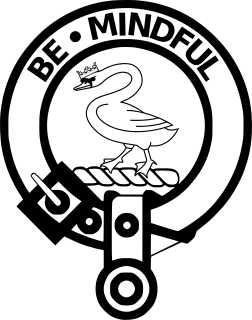 W
WClan Campbell of Cawdor is a highland Scottish clan and a branch of the larger Clan Campbell. While the clan is recognised by the Standing Council of Scottish Chiefs, the clan does not have a clan chief recognised by the Standing Council of Scottish Chiefs. Also, because the clan does not have a clan chief recognised by the Lord Lyon King of Arms it is considered an armigerous clan. The head of the Clan Campbell of Cawdor is the Earl Cawdor, currently held by Colin Campbell.
 W
WInnischonnell is an island in Loch Awe, Scotland. It is part of Kilchrenan and Dalavich parish, in Argyll. The island is fourteen miles east of Kilmartin, Argyll.
 W
WThe Campbells of Craignish, form one of the oldest branches of the ancient and powerful Clan Campbell in Scotland.. They claim descent from Dugald Campbell, the second son of Sir Archibald Gillespic Campbell (b.1130), 5th Knight of Lochawe and 20th Chief of Clan Campbell at the time. Sir Archibald's first son, Sir Duncan Campbell, 6th Knight of Lochawe, was the founder of the principal branch of the Campbell family who today holds the title Duke of Argyll.
 W
WInveraray Castle is a country house near Inveraray in the county of Argyll, in western Scotland, on the shore of Loch Fyne, Scotland's longest sea loch. It is one of the earliest examples of Gothic Revival architecture.
 W
WColonel Alexander Campbell of Possil (1754–1849) entered the army as an ensign in the 42nd Regiment in April 1769, and obtained a lieutenancy in the 2nd Battalion Royals the following year in Menorca.
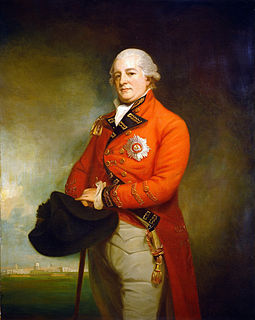 W
WSir Archibald Campbell KB served as governor of Georgia, Jamaica, and Madras. He was a major Scottish landowner, Heritable Usher of the White Rod for Scotland and politician who sat in the House of Commons between 1774 and 1791.
 W
WArdencaple Castle, also known as Ardincaple Castle, and sometimes referred to as Ardencaple Castle Light, is a listed building, situated about 1 statute mile (1.6 km) from Helensburgh, Argyll and Bute, Scotland. Today, all that remains of the castle is a tower, perched on the edge of a plateau, looking down on a flat tract of land between it and the shore of the Firth of Clyde. The original castle was thought to have been built sometime in the 12th century, and part of the remains of the original castle were said to have existed in the 19th century. Today, that sole remaining tower is used as a navigational aid for shipping on the Firth of Clyde. Because of its use as a lighthouse the tower has been called Ardencaple Castle Light.
 W
WArgyll's Lodging is a 17th-century town-house in the Renaissance style, situated below Stirling Castle in Stirling, Scotland. It was a residence of the Earl of Stirling and later the Earls of Argyll. The Royal Commission regards it as “the most important surviving town-house of its period in Scotland”. At the end of the 20th century it became a museum.
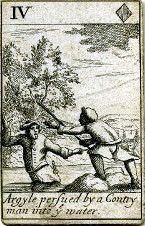 W
WArgyll's Rising or Argyll's Rebellion was a 1685 attempt to overthrow King James II and VII of England, Ireland, and Scotland by a group of Scottish exiles. Led by Archibald Campbell, 9th Earl of Argyll, the rising was intended to tie down Royal forces in Scotland while a simultaneous rebellion under James Scott, 1st Duke of Monmouth began in England. Both rebellions were backed by dissident Protestants opposed to the accession of the Roman Catholic James to the throne.
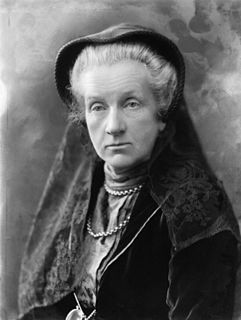 W
WLady Frances Balfour was one of the highest-ranking members of the British aristocracy to assume a leadership role in the Women's suffrage campaign in the United Kingdom. Balfour was a member of the Executive Committee of the National Society for Women's Suffrage from 1896 to 1919. As a non-violent suffragist, she was opposed to the militant actions of the Women's Social and Political Union, whose members were called the suffragettes.
 W
WThe Auchinbreck of Campbell family, was founded by Duncan Campbell of Kilmichael, in Glassary, Argyllshire, Scotland. He was the son of Duncan, first Lord Campbell of the Clan Campbell, by his second wife Margaret, daughter of Sir John Stewart of Blackhall, the illegitimate son of King Robert III of Scotland. The family of the Lords Campbell later became Dukes of Argyll, and remain chiefs of Clan Campbell. Duncan Campbell, as a grandson of King Robert III, received a considerable estate confirmed by royal charter dated 19 June 1452. The family remained at their estate of Auchinbreck, from which they took their title, until 1641. The Campbells of Auchinbreck were commissioned to provide military training and were used by the Earls of Argyll as military support. In 1628 the then head of the family of Campbells in Auchinbreck received a baronetcy, which included a grant of North American land in Nova Scotia.
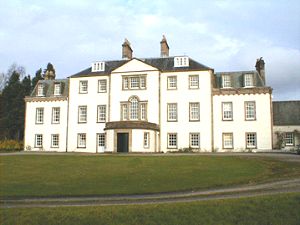 W
WThe Campbells of Strachur, also known as the MacArthur Campbells of Strachur, may be the oldest branch of the Clan Campbell. The family traces its descent from Sir Arthur Campbell, who is said to have been a son of Duncan Dubh, who in turn may have been an elder brother of Gilleasbaig, who was in turn the father of the patrilineal-ancestor of the chiefs of Clan Campbell. The heads of the Strachur family were known in Gaelic as Mac Artairr, "son of Arthur", in reference to their alleged ancestry. The head of the family bears the Gaelic title MacArtair Strachuirr.
 W
WSir Edward Taswell Campbell, 1st Baronet, KStJ JP was a Conservative Party politician in the United Kingdom.
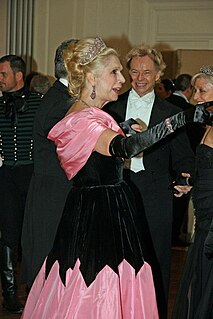 W
WGeorgia Arianna, Lady Colin Campbell, known as Lady C, is a Jamaican-born British author, socialite and television personality who has published eight books about the British royal family. They include biographies of Diana, Princess of Wales, which was on The New York Times bestseller list in 1992, Queen Elizabeth The Queen Mother, and Meghan, Duchess of Sussex.
 W
WCaroline Townshend, 1st Baroness Greenwich was a British peeress, the daughter and eldest child of John Campbell, 2nd Duke of Argyll, and his wife, the former Jane Warburton. She was a sister of the diarist Lady Mary Coke.
 W
WCarter-Campbell of Possil is a branch of Clan Campbell, a Scottish clan. Historically, they are part of Clan Campbell, which was regarded as one of the largest Scottish clans. The branch of the Campbell clan was historically centred in Lawers. Some of the clan, which originated with the original Campbells, had links to the lands of Argyll.
 W
WLady Charlotte Susan Maria Bury was an English novelist, who is chiefly remembered in connection with a Diary illustrative of the Times of George IV (1838).
 W
WColin Frederick Campbell, 1st Baron Colgrain, was a British banker.
 W
WLord Colin Campbell was a Scottish Liberal politician who sat in the House of Commons from 1878 to 1885.
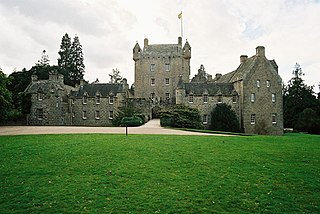 W
WThe Battle of Daltullich was a Scottish clan battle that took place in the autumn of 1499 at a place called Daltullich which is near to Strathnairn in the Scottish Highlands. It was fought between men of the Clan Calder and Clan Campbell. The heiress to the chiefship of the Clan Calder, Muriel, was carried away as agreed by men of the Clan Campbell to marry into the Campbell family, but they were pursued by her paternal uncles who tried to prevent this from happening.
 W
WLieutenant Colonel Duncan Maclachlan Carter-Campbell of Possil OBE, son of Major-General George Tupper Campbell Carter-Campbell C.B., D.S.O, was a British Army Colonel during the 1950s.
 W
WDuncan Campbell, 1st Lord Campbell (Classical Gaelic Donnchadh mac Cailein, and also called Donnchadh na-Adh of Loch Awe,, was a Scottish nobleman and politician. He was an important figure in Scottish affairs in the first half of the 15th century and Justiciar of Argyll. He was head of the Clan Campbell for 40 years.
 W
WDunoon Castle is a ruined castle located at Dunoon on the Cowal peninsula in Argyll and Bute, Scotland. The castle sat upon a cone-shaped hill of about 80 feet high, a volcanic plug. Very little remains of the castle's structure today. Castle House, built in 1822, stands a few yards north of the castle ruins.
 W
WThe Dunoon massacre was a massacre that took place around Dunoon on the Cowal Peninsula, Scotland, on 3 June, 1646. Men of the powerful Clan Campbell massacred men, women and children of the Clan Lamont.
 W
WDunstaffnage Castle is a partially ruined castle in Argyll and Bute, western Scotland. It lies 3 miles (5 km) NNE of Oban, situated on a platform of conglomerate rock on a promontory at the south-west of the entrance to Loch Etive, and is surrounded on three sides by the sea. The castle and the nearby chapel ruin have been a Historic Scotland property since 1958. Both are Scheduled Ancient Monuments.
 W
WGavin Campbell, 1st Marquess of Breadalbane, styled Lord Glenorchy between 1862 and 1871 and known as The Earl of Breadalbane and Holland between 1871 and 1885, was a Scottish nobleman and Liberal politician.
 W
WGeneral George Campbell of Inverneill, C.B., K.A (1803–1882) was Commandant of the Royal Artillery and served in the East India Company.
 W
WMajor General George Tupper Campbell Carter-Campbell, was a senior British Army officer who served in the Second Boer War and the First World War.
 W
WBaron Hamilton of Hameldon, of Hambledon in the County of Leicester, is a title in the Peerage of Great Britain, held by the Duke of Hamilton from 1790 to 1799 and by the Duke of Argyll since 1799.
 W
WIan Douglas Campbell, 11th and 4th Duke of Argyll was a Scottish peer. He is chiefly remembered for his unhappy marriage to, and scandalous 1963 divorce from, Margaret Whigham.
 W
WLieutenant General Sir James Campbell, 1st Baronet, 3rd of Inverneill House was a Scottish soldier, politician and colonial administrator. He was Governor and Commander-in-Chief of the Ionian Islands, Adjutant-General to the British Forces and Heritable Usher of the White Rod for Scotland. He is buried at Westminster Abbey.
 W
WLieutenant-Colonel John Campbell, of Stonefield (1753–1784) was a Scottish soldier known for his defence of Mangalore.
 W
WVice-Admiral John Campbell (1720–1790) was born in the parish of Kirkbean in Kirkcudbrightshire, Scotland. Campbell was a British naval officer, navigational expert and colonial governor.
 W
WJohn Campbell, 1st Baron Cawdor, FRS FSA, was a Welsh art-collector and politician who sat in the House of Commons from 1777 to 1796.
 W
WJohn Campbell, 2nd Marquess of Breadalbane,, styled Lord Glenorchy until 1831 and as Earl of Ormelie from 1831 to 1834, was a Scottish nobleman and Liberal politician.
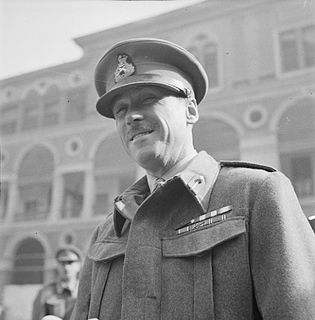 W
WMajor-General John Charles Campbell,, known as Jock Campbell, was a British Army officer and a Scottish recipient of the Victoria Cross, the highest award for gallantry in the face of the enemy that can be awarded to British and Commonwealth forces.
 W
WBrigadier General John Vaughan Campbell, was a senior British Army officer and a recipient of the Victoria Cross, the highest award for gallantry in the face of the enemy that can be awarded to British and Commonwealth forces.
Lady Elizabeth Campbell, known as Liza Campbell, is an artist, calligrapher, columnist, and writer, born in the north of Scotland and currently living in London, England. She is the second daughter of Hugh Campbell, 6th Earl Cawdor (1932–1993), by his first wife, the former Cathryn Hinde. She is the last child of an Earl Cawdor to have been born at Cawdor Castle, which has previously been erroneously associated with Shakespeare's Macbeth.
 W
WBrigadier Lorne MacLaine Campbell, was a British Army officer and a Scottish recipient of the Victoria Cross, the highest award for gallantry in the face of the enemy that can be awarded to British and Commonwealth forces.
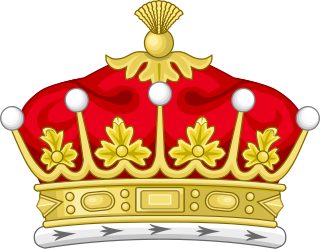 W
WEarl of Loudoun, named after Loudoun in Ayrshire, is a title in the Peerage of Scotland. It was created in 1633 for John Campbell, 2nd Lord Campbell of Loudoun, along with the subsidiary title Lord Tarrinzean and Mauchline. The 1st Earl's wife Margaret was the granddaughter and heiress of Hugh Campbell, who had been created Lord Campbell of Loudoun; he resigned the peerage in favour of his grandson-in-law, who was later created an earl.
 W
WLoudoun Castle is a ruined 19th-century country house near Galston, in the Loudoun area of Ayrshire, Scotland. The ruins are protected as a category A listed building.
 W
WMathilda Campbell, Duchess of Argyll was a Scottish noblewoman. She was the third and final wife of Ian Campbell, 11th Duke of Argyll.
 W
WRait Castle is a ruined hall-house castle dating from the thirteenth century, situated just south of Nairn near Inverness, Scotland. It is a scheduled monument.
 W
WThe Battle of Stalc was a Scottish clan battle that was fought in the year 1468. It was fought between the forces of the Clan Stewart of Appin and their allies the Clan MacLaren against the Clan MacDougall and the Clan MacFarlane. The latter force may have included men from the Clan Campbell.
 W
WColonel Thomas Tupper Carter-Campbell of Possil was a British soldier.
 W
WLady Victoria Campbell was a British philanthropist. She was born to two of the largest landowners in Scotland, being the third daughter of George Campbell, 8th Duke of Argyll and his wife Lady Elizabeth Leveson-Gower. A childhood bout of poliomyelitis caused paralysis and required her to wear leg braces for the rest of her life.
 W
WLieutenant General Sir Walter Campbell, was a British Army officer who served as Quartermaster-General to the Forces.
 W
W W
W W
W